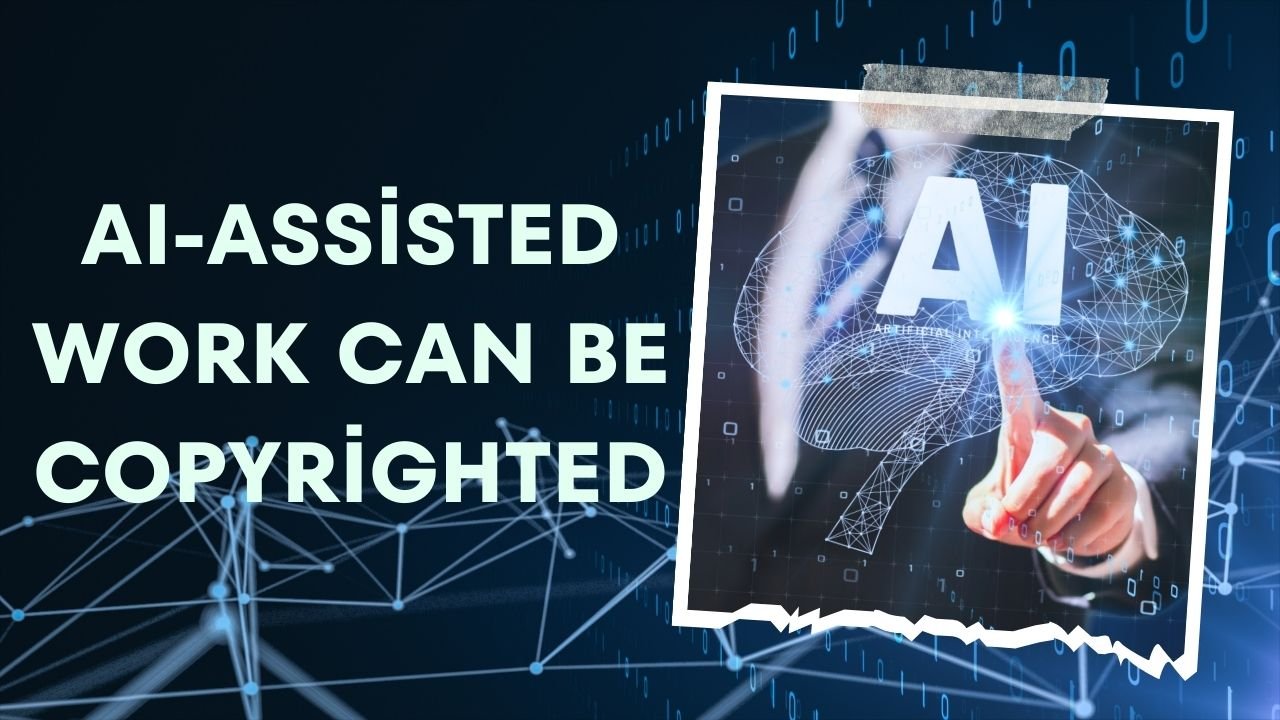Imagine this: you’re an artist, writer, or musician, and you’ve just used an AI tool to help you create something amazing. Maybe it’s a stunning digital painting, a catchy song, or even a short story. But here’s the big question: Can you copyright it? The answer isn’t as straightforward as you might think. Thanks to new guidelines from the U.S. Copyright Office, AI-assisted works can be copyrighted—but only if you, the human creator, play a significant role in the process. Let’s dive into what this means for you and how you can protect your creative work in the age of AI.
What Does “AI-Assisted” Really Mean?
AI-assisted creativity is everywhere these days. From generating art to composing music, AI tools like ChatGPT, DALL·E, and others are revolutionizing how we create. But here’s the catch: the U.S. Copyright Office has made it clear that simply typing a prompt into an AI system isn’t enough to claim copyright. You need to add your own creative spark.
Think of it like baking a cake. The AI is your mixer—it helps you whip up the batter, but you’re the one adding the secret ingredients, decorating it, and making it uniquely yours. Without your creative touch, it’s just a plain cake.
The Key to Copyrighting AI-Assisted Works
So, how do you make sure your AI-assisted work is copyrightable? Here’s what you need to know:
- Substantial Human Input is a Must
The Copyright Office emphasizes that your creative contribution must be “perceptible” in the final product. This means you can’t just type “create a painting of a sunset” and call it a day. You need to modify, arrange, or enhance the AI’s output in a way that reflects your unique vision. - Disclose Your Use of AI
When applying for copyright, you’ll need to be upfront about using AI tools. This isn’t just a formality—it’s a way to show that you’ve gone beyond simply relying on the AI to do all the work. - Showcase Your Creative Process
Be prepared to explain how you adapted or transformed the AI-generated content. Did you tweak the colors in a digital artwork? Rearrange the lyrics in a song? These details matter because they demonstrate your artistic control.
The Creative Process: Where Humans and AI Collide
Let’s break down the creative process for AI-assisted works into five key phases. Each phase requires your input to ensure the final product is copyrightable:
| Phase | What You Do | Why It Matters |
| Conceptualization | Develop the initial idea and decide how to use AI tools. | Sets the foundation for your creative vision. |
| AI Interaction | Use prompts or commands to guide the AI’s output. | Generates raw material for you to work with. |
| Selection & Curation | Choose, arrange, and adapt the AI-generated content. | Shows your creative judgment and decision-making. |
| Modification | Refine and enhance the AI’s output, adding original elements. | Adds your unique touch to the work. |
| Final Composition | Assemble the final product, ensuring your creative authorship is clear. | Makes the work eligible for copyright protection. |
What Happens If You Don’t Add Enough Creativity?
If your work is deemed too reliant on AI, it won’t qualify for copyright protection. For example, if you ask an AI to “write a poem about love” and publish it as-is, the Copyright Office will likely reject your application. Why? Because there’s no perceptible human creativity in the final product.
On the flip side, if you take that AI-generated poem, rewrite parts of it, add your own verses, and rearrange the structure, you’ve now added enough of your own creative input to make it copyrightable.
The Future of AI and Copyright: What’s Next?
The world of AI-assisted creativity is evolving fast, and so are the rules around copyright. Here are some key issues to watch:
- Training AI on Copyrighted Material
Many AI systems are trained on existing works, which raises questions about fair use and compensation for original creators. - Defining “Human Creativity”
As AI tools become more advanced, the line between human and machine authorship will blur. The Copyright Office may need to develop more specific criteria to determine what counts as “enough” human input. - New Models for Compensation
Should artists whose works are used to train AI systems be paid? This is a hot topic that could shape the future of creative industries.
Tips for Artists Using AI Tools
If you’re using AI in your creative process, here’s how to stay on the right side of copyright law:
- Document Your Process
Keep track of how you use AI and what changes you make to its output. This will help you prove your creative contribution if needed. - Go Beyond Prompts
Don’t just rely on the AI to do all the work. Add your own flair, whether it’s editing, combining elements, or adding original content. - Be Transparent
When applying for copyright, clearly explain how you used AI and what you did to make the work your own.
Conclusion: Your Creativity, Your Rights
AI is a powerful tool, but it’s just that—a tool. The magic happens when you bring your own creativity to the table. By understanding the guidelines and putting in the effort to make your work uniquely yours, you can protect your creations and thrive in this new era of AI-assisted art.
So, the next time you use AI to create something amazing, remember: it’s not just about what the machine can do—it’s about what you can do with it.
Got Questions?
If you’re still unsure about how to copyright your AI-assisted work, drop a comment below or reach out to the U.S. Copyright Office for more guidance. Happy creating!

